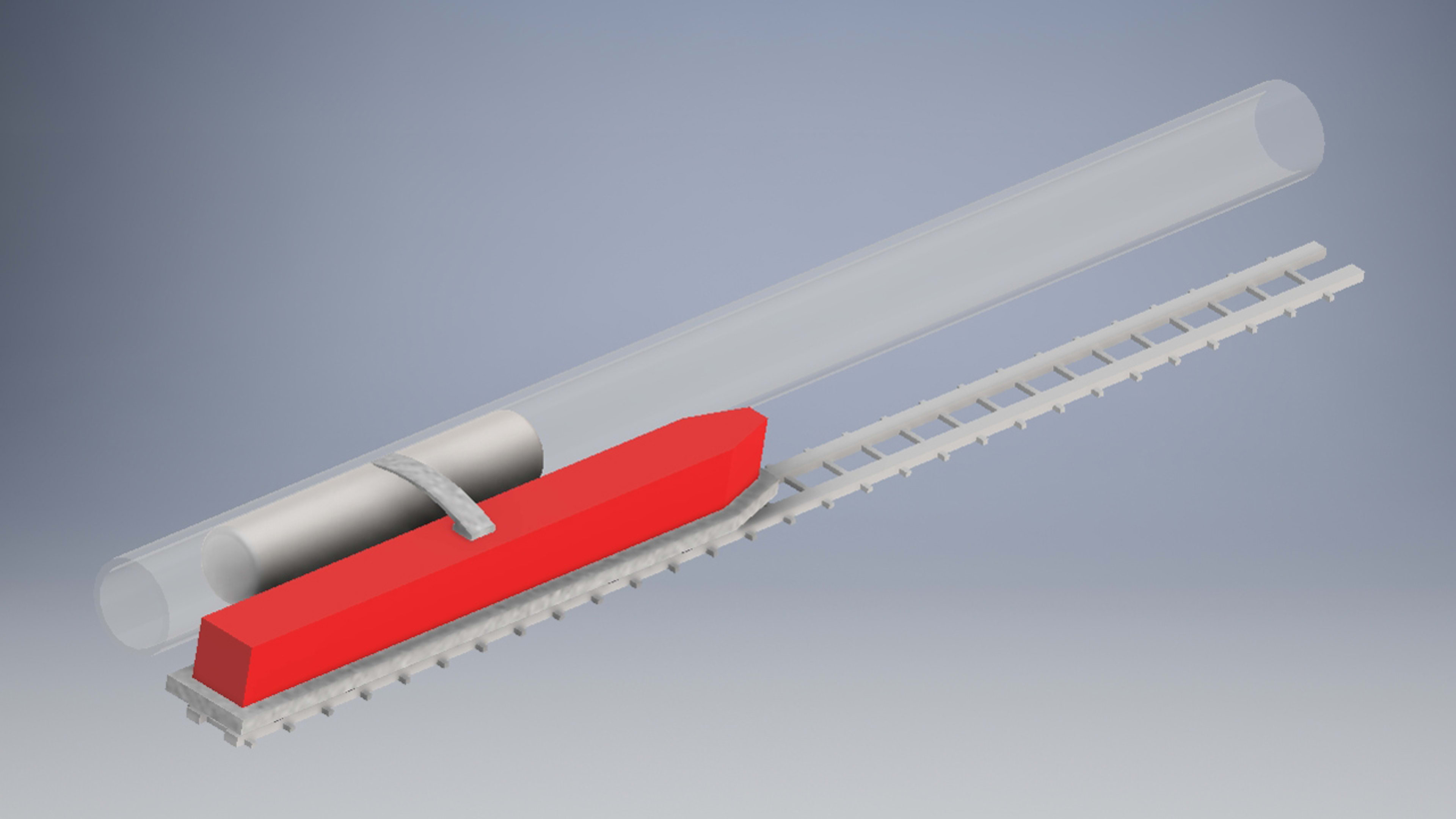As early as 2029, a hyperloop planned for India could potentially be whisking people between Mumbai and Pune, taking around half an hour to make a journey that would take a few hours by car. The concept—which Elon Musk proposed in 2012 but builds on older ideas—has spawned multiple companies attempting to make the technology a reality. But a 13-year-old student named Caroline Crouchley argues that she has a solution that would be easier to build, less expensive, and safer.

In the hyperloop, passengers would ride inside hovering pods inside a low-pressure tube that is a partial vacuum, allowing the pods to potentially travel more than 700 miles an hour (last year, students set a speed record of 290 miles an hour on a hyperloop test track). Crouchley’s concept wouldn’t go as fast as the theoretical hyperloop but could still theoretically run more than twice as fast as a standard train now, cutting commutes in half. Rather than putting passengers inside a tube—and risking the potential of a vacuum collapse if anything goes wrong with that tube—she wants to use a vacuum tube next to existing trains, making use of both the infrastructure and trains that are already in place. A magnetic shuttle inside the tube, embedded with rare earth magnets, connects to the train and propels it forward. The system can run on renewable electricity.

“When I learned about Elon Musk and the hyperloop, I was fascinated by it, as I like fast things, but I also thought it sounded very dangerous for passengers,” says Crouchley, who first became interested in train technology in elementary school. While some experts have called the concept of the hyperloop “completely impractical“—and there’s still a strong possibility that the technology may never be built—Crouchley hopes that it eventually moves forward. She sees her design as an intermediate step that could realistically happen earlier. “What is needed are gradual steps. I see my project as a more practical leap right now from where we are to where we need to go. My proposed design offers high-speed train travel that could be developed sooner and at a much lower cost. It makes more sense as it uses existing rights of way. I am a big supporter of the hyperloop, but I see my project as a more feasible opportunity right now.”

It’s critical, she argues, to offer public transportation that can better compete with cars, as transportation has become both the largest source of greenhouse gas emissions in the country and a major source of local air pollution that causes health problems like asthma. “We are choking our cities with air pollution from trucks and cars,” she says. “We must move in the direction of workable mass transit, and right now, trains are the most ecological way of moving people and things from point A to point B.” Current trains are both slow and, for the most part, polluting, with many still running on diesel or other fossil fuels.
Crouchley hopes to move forward with the idea. “I am interested in making my train a reality and starting a conversation about how we can redesign existing infrastructure to accommodate the need to switch to renewables for a sustainable future,” she says. “My plans are to open-source my project to teams of engineers, scientists, and universities such as MIT and Harvard to solve the complex mathematical equations and physics required to make the idea a reality.”
Recognize your brand’s excellence by applying to this year’s Brands That Matter Awards before the early-rate deadline, May 3.
